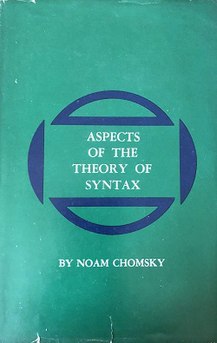Overview
According to the Chomskyan tradition, language acquisition is easy for children because they are born with a universal grammar in their minds. The tradition also distinguishes between linguistic competence, what a person knows of a language, and linguistic performance, how a person uses it. Finally, grammars and metagrammars are ranked by three levels of adequacy: observational, descriptive, and explanatory. A core aspect of the original Standard Theory is a distinction between two different representations of a sentence, called deep structure and surface structure. The two representations are linked to each other by a set of transformation rules, the totality of these rules is what constitute grammar, and what a grammatical description of a language should present. Under this theory, a speaker must have access to both structures to interpret an expression.
Language acquisition is the process by which humans acquire the capacity to perceive and comprehend language, as well as to produce and use words and sentences to communicate.
Universal grammar (UG) in linguistics, is the theory of the genetic component of the language faculty, usually credited to Noam Chomsky. The basic postulate of UG is that a certain set of structural rules are innate to humans, independent of sensory experience. With more linguistic stimuli received in the course of psychological development, children then adopt specific syntactic rules that conform to UG. It is sometimes known as "mental grammar", and stands contrasted with other "grammars", e.g. prescriptive, descriptive and pedagogical. The advocates of this theory emphasize and partially rely on the poverty of the stimulus (POS) argument and the existence of some universal properties of natural human languages. However, the latter has not been firmly established, as some linguists have argued languages are so diverse that such universality is rare. It is a matter of empirical investigation to determine precisely what properties are universal and what linguistic capacities are innate.
Linguistic competence is the system of linguistic knowledge possessed by native speakers of a language. It is distinguished from linguistic performance, which is the way a language system is used in communication. Noam Chomsky introduced this concept in his elaboration of generative grammar, where it has been widely adopted and competence is the only level of language that is studied.
Under this model, syntax was placed in the center of linguistic research and sought to go beyond description. Scholars explored the formalism of syntax and psychology of grammar under this model. This led to more systematic research on linguistic data such as native speaker judgments and distinctions in grammaticality.
In linguistics, grammaticality is determined by the conformity to language usage as derived by the grammar of a particular speech variety. The notion of grammaticality rose alongside the theory of generative grammar, the goal of which is to formulate rules that define well-formed, grammatical, sentences. These rules of grammaticality also provide explanations of ill-formed, ungrammatical, sentences.
Many notable linguists have written on the topic, including Andrew Radford, [2] Rodney Huddleston, [3] and Roger Fowler. [4] Aspects of transformational syntax were revised or replaced under the Minimalist program. [5]

Andrew Radford is a British linguist known for his work in syntax and child language acquisition. His first important contribution to the field was a 1977 book on Italian syntax. He achieved international recognition in 1981 for his book Transformational Syntax, which sold over 30,000 copies and was the standard introduction to Chomsky's Government and Binding Theory for many years; and this was followed by a best-selling introduction to transformational grammar in 1988, which sold over 70,000. He has since published several books on syntax within the framework of generative grammar and the Minimalist Program of Noam Chomsky.
Rodney D. Huddleston is a British linguist and grammarian specializing in the study and description of English.
Roger Fowler (1938–1999) was a world-renowned and long-serving British Linguist, and was professor of English and Linguistics at the University of East Anglia. He is well known for his works in stylistics. Together with Bob Hodge, Gunther Kress and Tony Trew, he authored the influential book Language and Control, which gave rise to the discipline of critical linguistics. He was educated at University College, London.
Non-transformational syntax
Non-transformational syntax describes competing models. The main non-transformational syntactic frameworks include head-driven phrase structure grammar, lexical-functional grammar, categorial grammar, and simpler syntax. [6]
Head-driven phrase structure grammar (HPSG) is a highly lexicalized, constraint-based grammar developed by Carl Pollard and Ivan Sag. It is a type of phrase structure grammar, as opposed to a dependency grammar, and it is the immediate successor to generalized phrase structure grammar. HPSG draws from other fields such as computer science and uses Ferdinand de Saussure's notion of the sign. It uses a uniform formalism and is organized in a modular way which makes it attractive for natural language processing.
Categorial grammar is a term used for a family of formalisms in natural language syntax motivated by the principle of compositionality and organized according to the view that syntactic constituents should generally combine as functions or according to a function-argument relationship. Most versions of categorial grammar analyze sentence structure in terms of constituencies and are therefore phrase structure grammars.


